A refugee said "I cannot go back to my country because of the following points: 1. Imprisonment and Persecution 2. Torture and punishment 3. Electric torture 4. Beating with the stick on the feet (corporal punishment) 5. threatening me to be killed 6. Lack of human rights organizations which can lobby against human rights violation in the country. 7. Threatening to abuse my family members. 8. Demolition of my house. Due to all that I can’t go back".
Home Page
-
توقيع اتفاق سلام بين اطراف النزاع في الزاوية - لقد وقعت اطراف النزاع في الزاوية صلحا بموجبة تقف الحرب وتنتهي وهذا بفضل الله .. لكن هناك قنبلة وضعت في برميل قمامة في الشارع امام المحلات وعندما ارادوا ا...
-
استنكار لقانون التشهير والقذف في ليبيا - *منظمة الراية لحقوق الانسان* *E mail : **arayahro@yahoo.ie* *Blog: arayaarabic.blogspot.com* *التاريخ/ 01/01/2014 * *رقم اشاري / 0001177* *إستنكار* *لق...
-
-
May 1, 2009
The FBI, the Islamic Center of Irvine and Craig Monteilh: Who Was Conning Whom?
Published on April 29, 2009
Who Was that Mosqued Man?Craig Monteilh insists he was hot on the trail of terrorist plots at OC mosques. Count the victims of his earlier con games among the skeptics
If there’s a precise moment when the FBI first began to have a sinking feeling about Craig Monteilh, it likely occurred sometime in the spring of 2007, when his handlers read a small detail buried in one of his surveillance reports. Monteilh had been spying on the Islamic Center of Irvine and other mosques for several months. He’d earned the friendship and trust of a small group of Muslims, all of whom, he claims, were actually terrorists bent on carrying out violent attacks in Orange County. Their targets included shopping malls such as Fashion Island, South Coast Plaza and the Irvine Spectrum and, somewhat improbably, abandoned buildings in downtown Los Angeles.
According to his report, Monteilh was walking into a mosque in Tustin with a couple of the terrorists whose cell he’d infiltrated when he noticed a group of young Middle Eastern-looking men unloading several barrels from a van and hauling them into the mosque. At the time, Monteilh insists, he didn’t really think too much about what he saw. He was too busy focusing on the terror plot that he and the terrorists planned to discuss at the mosque that day.
“I looked at them like this, really quick, ‘Salaam aleikum,’” Monteilh recalls two years later in an interview at his house in Irvine, re-enacting the casual sideways glance and standard Islamic greeting—“Peace be unto you”—that he says he uttered that spring day. “I kept walking because we had other business. But I put it in my report that I observed six to eight young Middle Eastern Muslims loading barrels in the back of the mosque.”
But when Monteilh’s FBI handlers read his report, he claims, they began arguing about whether or not he was a liar. “They went, ‘What the hell is this?’” Monteilh recalls. “‘He’s lying.’” The FBI refuses to comment on anything Monteilh says, so assuming any of this happened the way Monteilh says it did, one could easily imagine what went through his handlers’ minds when they read his report: Maybe it wasn’t such a great idea to hire a convicted felon and con artist to spy on Orange County’s Muslim community after all.
* * *
Craig Monteilh’s self-declared status as an FBI informant first became public three months ago, shortly after the bureau arrested a 34-year-old Afghan immigrant named Ahmadullah Sais Niazi, charging him with perjury and passport fraud for allegedly lying about previous trips to Pakistan and the fact that his brother-in-law was a high-ranking member of a Taliban faction allied with al-Qaeda. In his sworn affidavit against Niazi, Special Agent Thomas J. Ropel III stated that, in a tape-recorded conversation, Niazi had referred to Osama bin Laden as “an angel.” On Feb. 21, the day after Niazi’s arrest, Monteilh told the LA Times that he was the informant who gave the FBI that tape and that the FBI had paid him to spy on Orange County mosques.
Although the FBI never responded to the latter claim, a week after Niazi’s arrest, Ropel testified in Niazi’s bail hearing that Monteilh had in fact provided the FBI with the tape recording. Ropel’s admission didn’t surprise the leadership of the Islamic Center of Irvine, of which Niazi had been a member. In June 2007, Niazi and another mosque member had reported Monteilh to the FBI, claiming that Monteilh was espousing terrorist rhetoric and trying to draw them into a plot to blow up shopping malls and abandoned buildings. When the FBI refused to investigate, the congregants suspected Monteilh might have been an agent provocateur; the Islamic Center sought and won a restraining order barring Monteilh from entering the mosque. (See Matt Coker’s “Talkin’ Jihad With Craig Monteilh,” March 5.)
Ropel’s admission that the FBI had been working with Monteilh all along led to a firestorm of controversy among Muslims in Orange County and beyond. It flew in the face of a June 2006 promise by J. Stephen Tidwell, an assistant director with the FBI, in a speech before an angry crowd at the Islamic Center of Irvine, that the bureau would never spy on mosques. That promise followed an Orange County Register story that quoted an FBI agent telling a group of Republicans in Newport Beach that the bureau was monitoring “extremists” affiliated with UC Irvine’s Muslim Student Union. (See Derek Olson’s “Against the Wall,” Oct. 19, 2007.)
The only confirmed cases of Orange County residents joining al-Qaeda involve Khalil Deek, a Palestinian exile, and Adam “Yahiye” Gadahn, a Jewish American teenager, both of whom fled to Pakistan before 9/11. Deek spent time in a Jordanian prison for his alleged role in a terrorist plot there but was freed months later. He has since disappeared and is believed to be dead. (See “So I Married a Terrorist . . .” April 20, 2007.) Gadahn, also known as Azzam the American, has appeared in several al-Qaeda videos and is rumored to be hiding out near the Pakistan-Afghanistan border.
By N Schou
Who Was that Mosqued Man?Craig Monteilh insists he was hot on the trail of terrorist plots at OC mosques. Count the victims of his earlier con games among the skeptics
If there’s a precise moment when the FBI first began to have a sinking feeling about Craig Monteilh, it likely occurred sometime in the spring of 2007, when his handlers read a small detail buried in one of his surveillance reports. Monteilh had been spying on the Islamic Center of Irvine and other mosques for several months. He’d earned the friendship and trust of a small group of Muslims, all of whom, he claims, were actually terrorists bent on carrying out violent attacks in Orange County. Their targets included shopping malls such as Fashion Island, South Coast Plaza and the Irvine Spectrum and, somewhat improbably, abandoned buildings in downtown Los Angeles.
According to his report, Monteilh was walking into a mosque in Tustin with a couple of the terrorists whose cell he’d infiltrated when he noticed a group of young Middle Eastern-looking men unloading several barrels from a van and hauling them into the mosque. At the time, Monteilh insists, he didn’t really think too much about what he saw. He was too busy focusing on the terror plot that he and the terrorists planned to discuss at the mosque that day.
“I looked at them like this, really quick, ‘Salaam aleikum,’” Monteilh recalls two years later in an interview at his house in Irvine, re-enacting the casual sideways glance and standard Islamic greeting—“Peace be unto you”—that he says he uttered that spring day. “I kept walking because we had other business. But I put it in my report that I observed six to eight young Middle Eastern Muslims loading barrels in the back of the mosque.”
But when Monteilh’s FBI handlers read his report, he claims, they began arguing about whether or not he was a liar. “They went, ‘What the hell is this?’” Monteilh recalls. “‘He’s lying.’” The FBI refuses to comment on anything Monteilh says, so assuming any of this happened the way Monteilh says it did, one could easily imagine what went through his handlers’ minds when they read his report: Maybe it wasn’t such a great idea to hire a convicted felon and con artist to spy on Orange County’s Muslim community after all.
* * *
Craig Monteilh’s self-declared status as an FBI informant first became public three months ago, shortly after the bureau arrested a 34-year-old Afghan immigrant named Ahmadullah Sais Niazi, charging him with perjury and passport fraud for allegedly lying about previous trips to Pakistan and the fact that his brother-in-law was a high-ranking member of a Taliban faction allied with al-Qaeda. In his sworn affidavit against Niazi, Special Agent Thomas J. Ropel III stated that, in a tape-recorded conversation, Niazi had referred to Osama bin Laden as “an angel.” On Feb. 21, the day after Niazi’s arrest, Monteilh told the LA Times that he was the informant who gave the FBI that tape and that the FBI had paid him to spy on Orange County mosques.
Although the FBI never responded to the latter claim, a week after Niazi’s arrest, Ropel testified in Niazi’s bail hearing that Monteilh had in fact provided the FBI with the tape recording. Ropel’s admission didn’t surprise the leadership of the Islamic Center of Irvine, of which Niazi had been a member. In June 2007, Niazi and another mosque member had reported Monteilh to the FBI, claiming that Monteilh was espousing terrorist rhetoric and trying to draw them into a plot to blow up shopping malls and abandoned buildings. When the FBI refused to investigate, the congregants suspected Monteilh might have been an agent provocateur; the Islamic Center sought and won a restraining order barring Monteilh from entering the mosque. (See Matt Coker’s “Talkin’ Jihad With Craig Monteilh,” March 5.)
Ropel’s admission that the FBI had been working with Monteilh all along led to a firestorm of controversy among Muslims in Orange County and beyond. It flew in the face of a June 2006 promise by J. Stephen Tidwell, an assistant director with the FBI, in a speech before an angry crowd at the Islamic Center of Irvine, that the bureau would never spy on mosques. That promise followed an Orange County Register story that quoted an FBI agent telling a group of Republicans in Newport Beach that the bureau was monitoring “extremists” affiliated with UC Irvine’s Muslim Student Union. (See Derek Olson’s “Against the Wall,” Oct. 19, 2007.)
The only confirmed cases of Orange County residents joining al-Qaeda involve Khalil Deek, a Palestinian exile, and Adam “Yahiye” Gadahn, a Jewish American teenager, both of whom fled to Pakistan before 9/11. Deek spent time in a Jordanian prison for his alleged role in a terrorist plot there but was freed months later. He has since disappeared and is believed to be dead. (See “So I Married a Terrorist . . .” April 20, 2007.) Gadahn, also known as Azzam the American, has appeared in several al-Qaeda videos and is rumored to be hiding out near the Pakistan-Afghanistan border.
By N Schou
Subscribe to:
Post Comments (Atom)

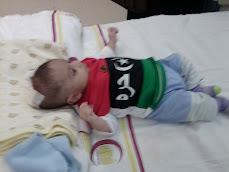




























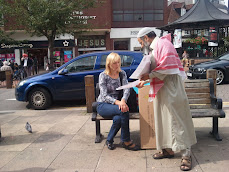

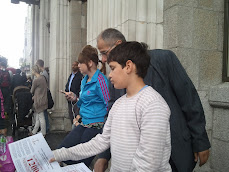





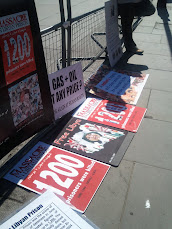
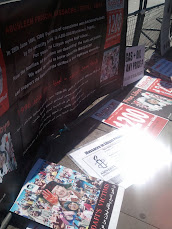















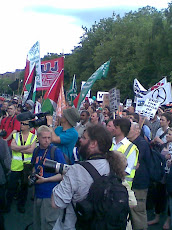












No comments:
Post a Comment